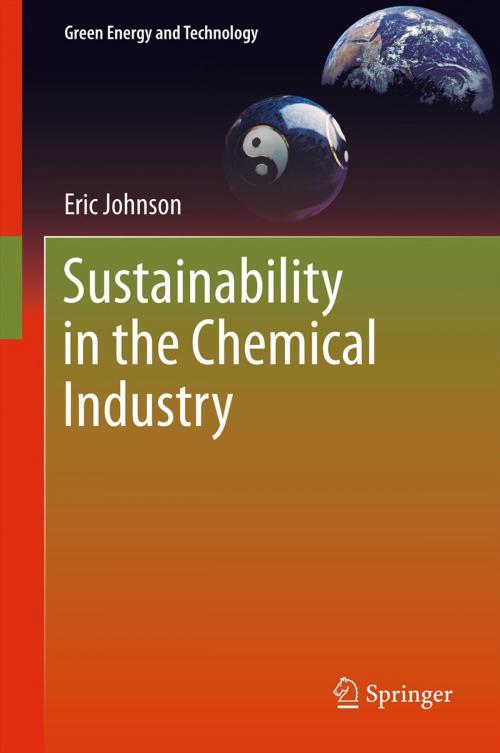Sustainability in the Chemical Industry
Nonfiction, Reference & Language, Language Arts, Communication, Science & Nature, Science, Biological Sciences, Environmental Science, Nature| Author: | Eric Johnson | ISBN: | 9789400738348 |
| Publisher: | Springer Netherlands | Publication: | April 17, 2012 |
| Imprint: | Springer | Language: | English |
| Author: | Eric Johnson |
| ISBN: | 9789400738348 |
| Publisher: | Springer Netherlands |
| Publication: | April 17, 2012 |
| Imprint: | Springer |
| Language: | English |
It’s the new rock and roll. It’s the new black. Sustainability is trendy, and not just among hipsters and pop stars. The uncool chemical sector helped pioneer it, and today, companies inside and outside the sector have embraced it. But what have they embraced? Surely not the Brundtland definition of meeting “the needs of the present without compromising the ability of future generations to meet their own needs.”
Sustainability describes a change in the chemical industry’s approach to the external world: to regulators, to greens, to neighbors, to investors and to the general public. Displacing the adversarialism of the 1970s-80s, sustainability is a new approach to social/political conflict, and an attempt to rebuild the industry’s long-suffering public image. In practice, it consists of:
A ‘stakeholder’ approach to communications and external relations
A rebranding of regulatory compliance and risk management, with the emphasis on their benefits to stakeholders
Recognition (and even celebration) of the opportunities, not just the costs, of environmental and social protection
The core of this book is a survey of the world’s 29 largest chemical companies: how they put sustainability into action (six of the 29 do not), and the six ‘sustainability brands’ they have created. It begins with a history of stakeholders conflict, before looking at various definitions of sustainability – by academics, by the public and by investors. After the survey and analysis, the book covers sustainability and ‘greenwash’ plus the ROI of sustainability, and it gives five recommendations.
It’s the new rock and roll. It’s the new black. Sustainability is trendy, and not just among hipsters and pop stars. The uncool chemical sector helped pioneer it, and today, companies inside and outside the sector have embraced it. But what have they embraced? Surely not the Brundtland definition of meeting “the needs of the present without compromising the ability of future generations to meet their own needs.”
Sustainability describes a change in the chemical industry’s approach to the external world: to regulators, to greens, to neighbors, to investors and to the general public. Displacing the adversarialism of the 1970s-80s, sustainability is a new approach to social/political conflict, and an attempt to rebuild the industry’s long-suffering public image. In practice, it consists of:
A ‘stakeholder’ approach to communications and external relations
A rebranding of regulatory compliance and risk management, with the emphasis on their benefits to stakeholders
Recognition (and even celebration) of the opportunities, not just the costs, of environmental and social protection
The core of this book is a survey of the world’s 29 largest chemical companies: how they put sustainability into action (six of the 29 do not), and the six ‘sustainability brands’ they have created. It begins with a history of stakeholders conflict, before looking at various definitions of sustainability – by academics, by the public and by investors. After the survey and analysis, the book covers sustainability and ‘greenwash’ plus the ROI of sustainability, and it gives five recommendations.















